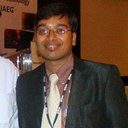Microbiome: Paediatricians' perspective.
Atslēgvārdi
Abstrakts
Millions of microorganisms inhabit the human body and affect its homeostasis in multiple ways. Alterations in this microbial community have implications for the health and survival of the human hosts. It is believed that these microorganisms should be included as part of the human genome because of their influence on human physiology hence the term "microbiome" is commonly used to refer to these microbes along with their genetic make-up and their environmental interactions. In this article we attempt to provide an insight into this recently discovered vital organ of the human body which is yet to be fully explored. We herein discuss the composition and role of microbiome in human health and disease with a special emphasis in children and culture-independent techniques employed in mapping of the microbiome. Alteration in the gut microbiome has been associated with causation of several paediatric diseases like infantile colic, necrotizing enterocolitis, asthma, atopy, obesity, type -1 diabetes, and autism. Atopic dermatitis and psoriasis have also been associated with changes in the cutaneous microbiome. Respiratory microbial imbalances during infancy have been linked with wheezing and bronchial asthma. Dysbiosis in the regional microbiome has been linked with caries, periodontitis, and chronic rhinosinusitis. The future therapeutic implications of this rapidly evolving area of research are also highlighted.


